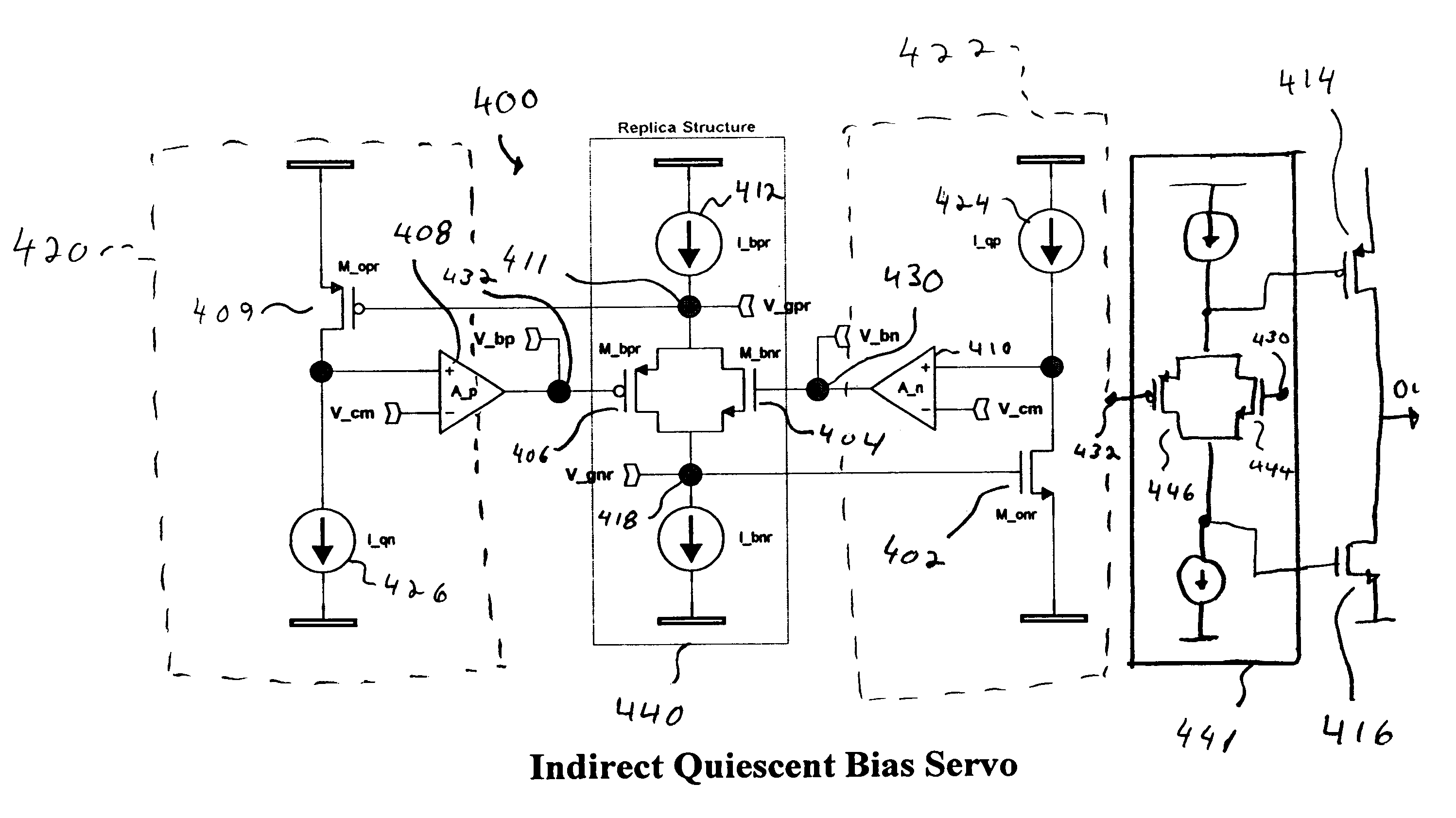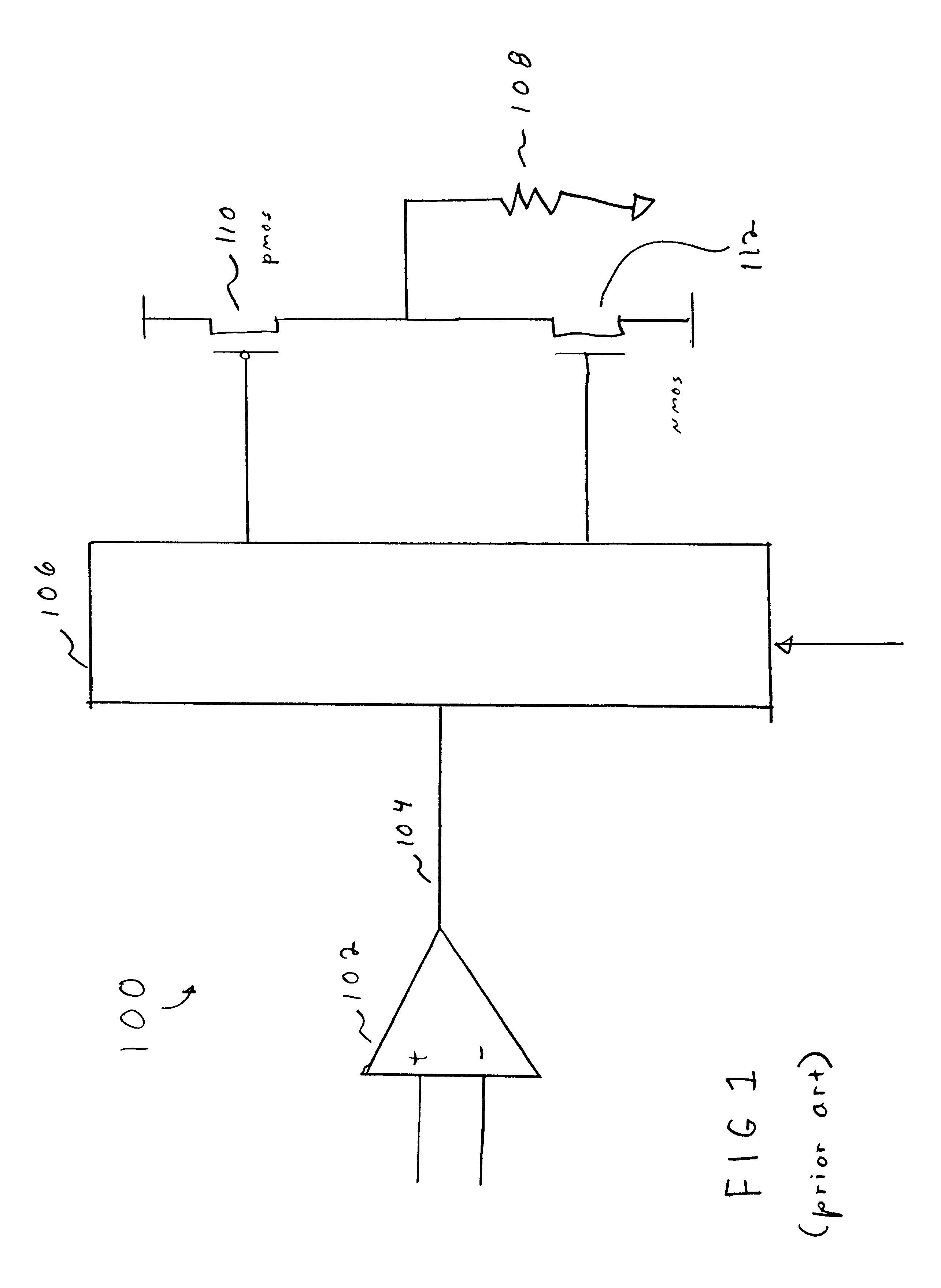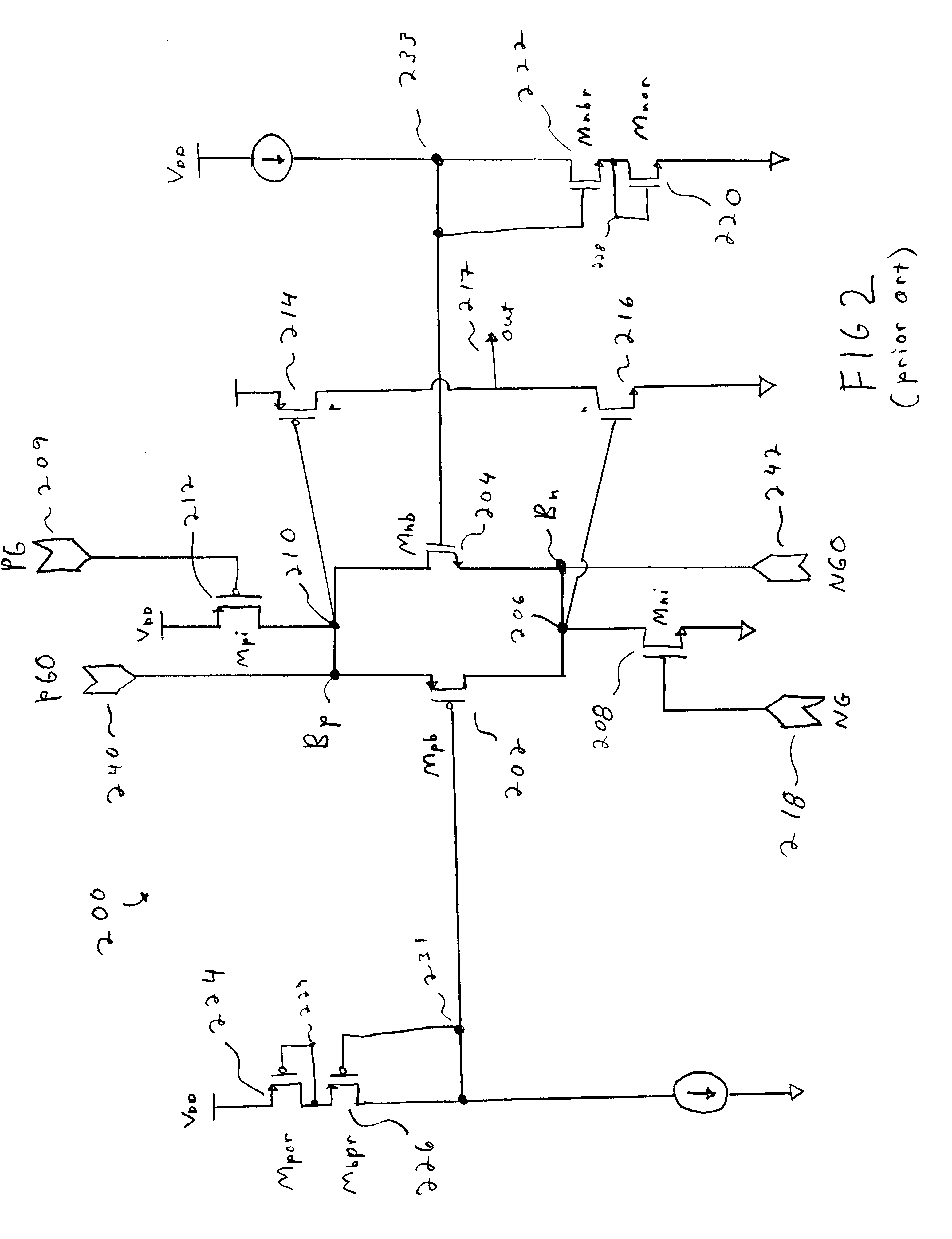Apparatus and methods for improved control of quiescent state of output transistors in a class AB amplifier
a technology of output transistor and quiescent state, which is applied in the field of amplifier biasing, can solve the problems of unsatisfactory accuracy difficult and complex task of precise control of output load transistor,
- Summary
- Abstract
- Description
- Claims
- Application Information
AI Technical Summary
Benefits of technology
Problems solved by technology
Method used
Image
Examples
Embodiment Construction
Referring now to FIG. 1, a block diagram of a typical prior art Class AB amplifier 100 suitably comprises a common source amplifier 102 having an output 104 applied through a coupler stage 106 to an output load 108. In the context of the present invention, output load 108 may be any device driven by a Class A, Class B, or Class AB amplifier, for example an audio speaker, a line driver for telecommunications equipment, or the like. Current is supplied to the output load 108 by a pair of complementary device transistors, namely, a PMOS or pull-up device transistor 110 and an NMOS or pull-down transistor 112. One of the principle functions of coupler circuit 106 is to precisely control the gate voltages to transistors 110 and 112, such that transistor 110 remains in the quiescent state while transistor 112 is pulled down, and such that transistor 112 is maintained in its quiescent state during the period in which transistor 110 is being pulled up.
Referring now to FIG. 2, an exemplary p...
PUM
 Login to View More
Login to View More Abstract
Description
Claims
Application Information
 Login to View More
Login to View More - R&D
- Intellectual Property
- Life Sciences
- Materials
- Tech Scout
- Unparalleled Data Quality
- Higher Quality Content
- 60% Fewer Hallucinations
Browse by: Latest US Patents, China's latest patents, Technical Efficacy Thesaurus, Application Domain, Technology Topic, Popular Technical Reports.
© 2025 PatSnap. All rights reserved.Legal|Privacy policy|Modern Slavery Act Transparency Statement|Sitemap|About US| Contact US: help@patsnap.com



